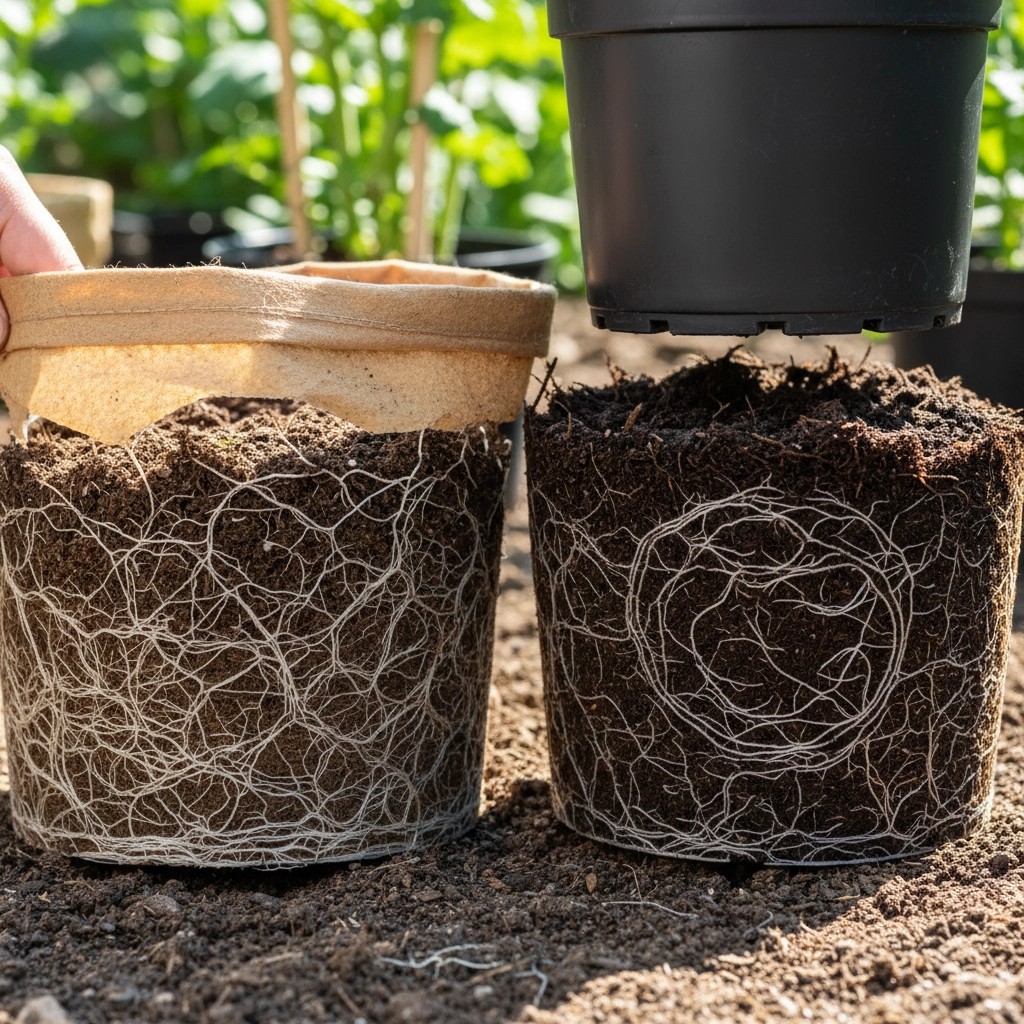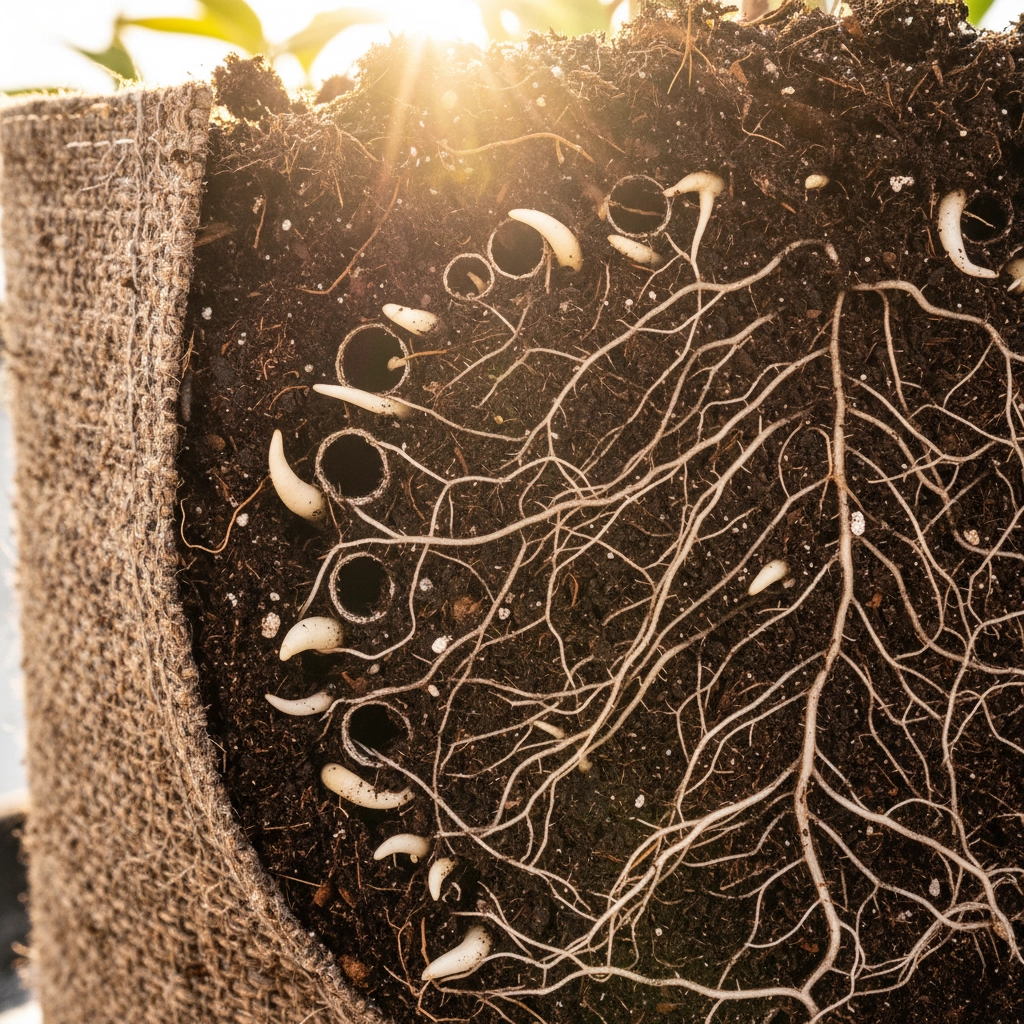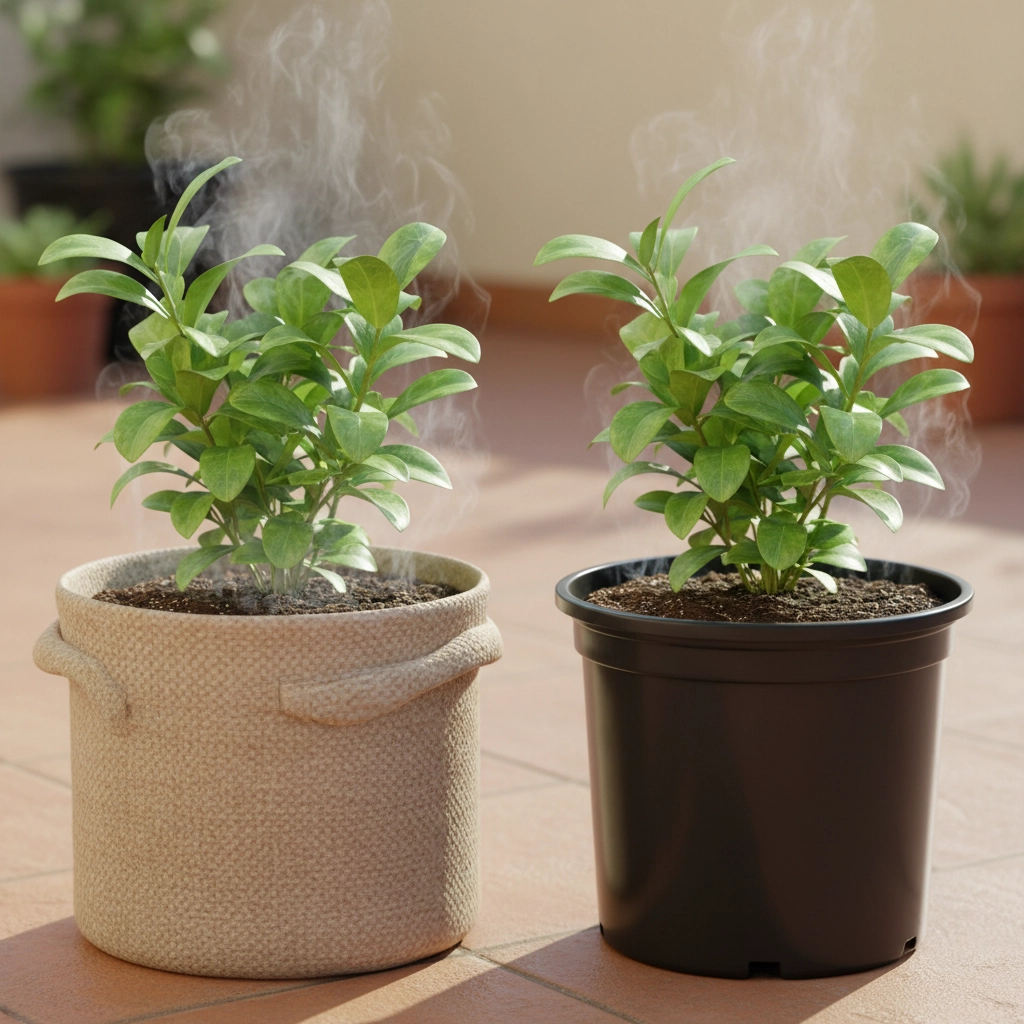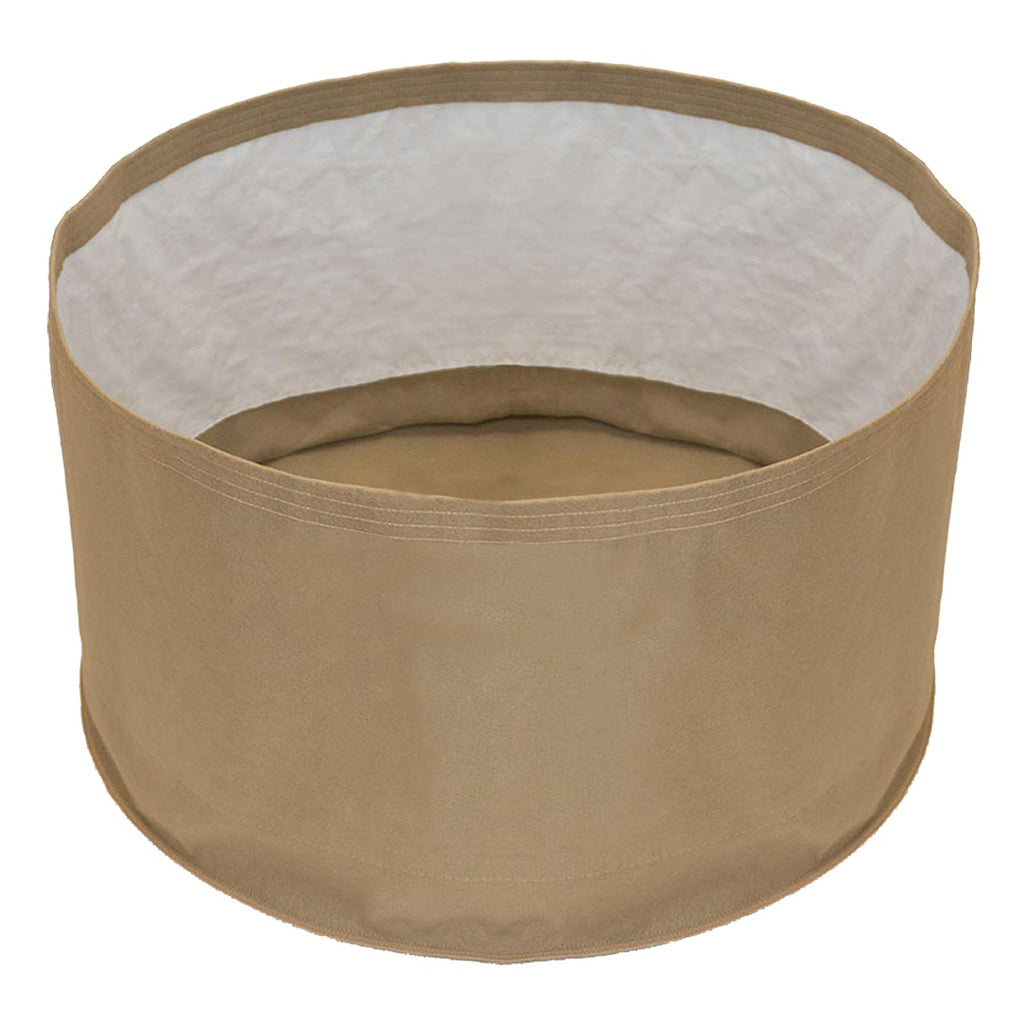Blog
Fabric Grow Pots vs Plastic Containers: Which Boosts Plant Health More? (Science-Backed Results)
The container you choose for your plants can make or break your growing success. After analyzing multiple scientific studies and real-world growing experiments, the evidence shows that fabric grow pots deliver superior root health for long-term plantings, while plastic containers offer practical advantages for annual crops and easier maintenance.
This isn't just another opinion piece. We're diving into actual research data, controlled studies, and measurable plant health outcomes to give you the straight facts about which container type will boost your garden's performance.
The Science Behind Container Performance
Research conducted on four different tree species: live oak, red maple, sweet gum, and golden rain tree: revealed some fascinating results. Overall plant growth was identical between fabric and plastic containers, but the root development told a completely different story.
The fabric containers produced significantly fewer circulating roots, which is crucial for preventing the root-bound conditions that plague plastic pots. Soil temperatures measured at identical depths showed no meaningful differences between container types, debunking the common myth that fabric pots run significantly cooler.

However, the story gets more interesting with flowering plants. Knock Out roses showed better overall growth in fabric containers, though their root development was actually superior in plastic pots during the study period. This suggests that fabric containers excel at promoting above-ground growth while creating healthier root systems over time.
For cold-hardy plants, fabric containers provided measurable winter protection. Viburnum plants in fabric pots experienced minimum temperatures 2-3°C higher during cold events, resulting in less root and shoot damage compared to plastic containers.
How Air-Pruning Changes Everything
The biggest advantage of fabric containers lies in a biological process called air-pruning. When plant roots reach the breathable fabric walls and encounter air, they naturally stop growing and trigger the plant to develop multiple new feeder roots behind the pruned tip.
This creates a dense, fibrous root network instead of the tangled, circling mess you typically see when you remove a plant from a plastic pot. Those circling roots eventually strangle the plant's own root system, limiting nutrient uptake and water absorption.
The oxygen advantage is massive. While plastic containers only provide adequate oxygen at the soil surface, fabric pots allow air circulation throughout the entire root zone. This enhanced oxygenation supports stronger root development and dramatically improves the plant's ability to uptake nutrients.
Temperature Control and Environmental Benefits
Fabric containers provide natural temperature regulation through evaporation cooling. As water evaporates through the breathable walls, it creates a cooling effect that helps maintain optimal root zone temperatures during scorching summer days.
This same breathability acts as insulation during cold periods. The air trapped in the fabric walls creates a buffer zone that protects plant roots from sudden temperature swings: a significant advantage if you're growing in areas with unpredictable weather.

The environmental benefits are real. Most quality fabric pots are made from recyclable materials and will eventually biodegrade, unlike plastic containers that can persist in landfills for decades. If sustainability matters to your growing operation, fabric pots align better with eco-friendly practices.
The Watering Reality Check
Here's where fabric containers hit their biggest limitation: water requirements increase dramatically. Soil in fabric pots dries out much faster due to evaporation through the breathable walls. You'll need to water up to three times more frequently compared to plastic containers.
For annual vegetables and flowers, this creates a maintenance burden that many growers find impractical. If you're growing tomatoes, peppers, or herbs for a single season, the convenience of plastic containers often outweighs the root health benefits of fabric pots.
The increased watering also means higher water costs and more time spent on maintenance. Commercial growers often stick with plastic for annual crops specifically because of labor and resource efficiency.
Durability and Long-Term Costs
Fabric pots typically last 2-3 growing seasons before the material starts breaking down. While this biodegradability benefits the environment, it increases your long-term costs compared to reusable plastic containers that can last for years with proper care.
Quality matters significantly with fabric containers. Cheap fabric pots may only last one season, while premium options can handle multiple growing cycles and harsh weather conditions. The initial investment in quality fabric containers pays off through better plant performance and reasonable lifespan.

Plastic containers, when properly maintained, can be reused for many years. They're also easier to clean and sterilize between growing cycles, which is important for preventing disease transmission between plants.
Specific Use Case Recommendations
Choose Fabric Containers For:
- Woody plants like fruit trees and ornamental shrubs
- Perennial flowers and long-term plantings
- Plants that will stay in containers for multiple seasons
- Growing situations where root health is the top priority
- Areas with extreme temperature fluctuations
Choose Plastic Containers For:
- Annual vegetables like tomatoes, peppers, and squash
- Herbs and seasonal flowers
- Situations where frequent watering isn't practical
- Budget-conscious growing operations
- Indoor growing where water management is critical
The Practical Growing Experience
In real-world growing conditions, fabric containers excel when you have the time and resources to manage their higher maintenance requirements. The improved root health translates to stronger, more resilient plants that can better handle stress, disease, and environmental challenges.
Plastic containers make more sense for busy gardeners, commercial operations focused on annual crops, or anyone who wants reliable results without intensive management. They're particularly valuable for indoor growing where consistent moisture levels are easier to maintain.
For hydroponic systems, plastic containers remain the standard choice because they integrate better with automated watering systems and don't interfere with nutrient solution management. The controlled environment of hydroponics negates many of the root health advantages that fabric containers provide in soil-based growing.
Making the Right Choice for Your Garden
The scientific evidence shows that both container types can successfully grow healthy plants, but they excel in different situations. Fabric containers provide measurable benefits for long-term plantings where root health directly impacts plant longevity and productivity.
For most home gardeners, a mixed approach works best. Use fabric containers for your permanent plantings like fruit trees, berry bushes, and perennial flowers. Stick with plastic containers for annual vegetables, herbs, and flowers where convenience and water efficiency matter more than long-term root development.
The key is matching the container to your specific growing goals, maintenance capacity, and plant types. Neither option is universally superior: they're tools optimized for different growing situations.
Consider your local climate, available time for garden maintenance, and long-term growing plans when making container choices. The right decision depends on your specific circumstances rather than following a one-size-fits-all recommendation.
Both fabric and plastic containers have their place in successful growing operations. Understanding their strengths and limitations helps you make informed decisions that support your gardening success.
Explore Fabric Pots and Container Options at Perfect Gardens
Shop Living Soil Fabric Pots here
Ready to dial in your container strategy? Explore our Living Soil Fabric Pots for long-term plantings and browse the full Pots, Containers & Media collection to compare fabric and plastic options, media, and accessories. If you’re unsure about sizing or irrigation, reach out—Perfect Gardens can help you pick a reliable setup.

